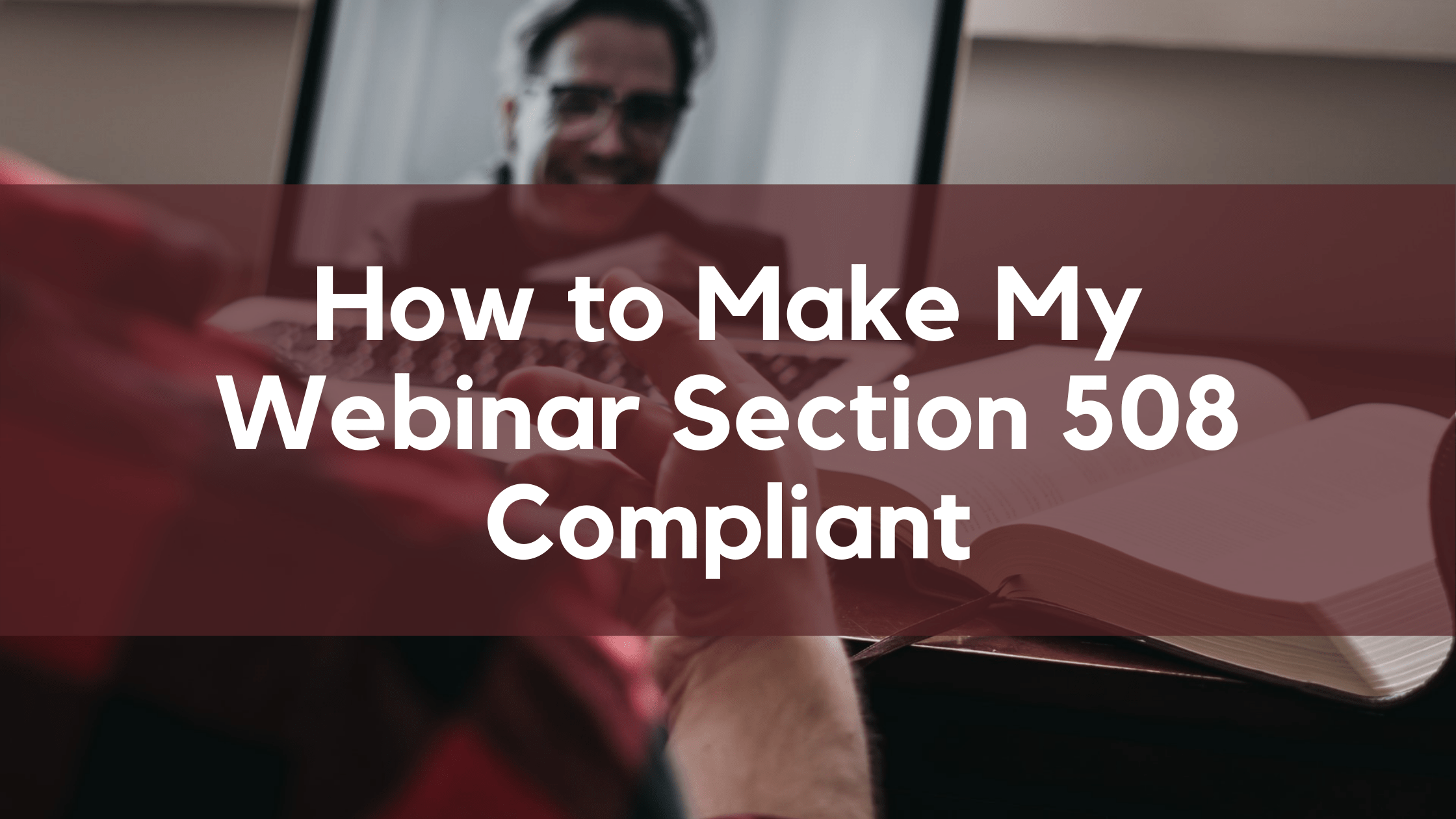Did you know that there are over 51 million people who have some type of disability in the U.S.? That’s roughly 16% of the country’s population. For that reason, the U.S. Access Board enacted Section 508 of the Workforce Rehabilitation Act to require federal agencies and their contractors to meet the standard accessibility requirement for information and communication technology (ICT) developed for people with disabilities.
In terms of webinars, being Section 508 compliant will surely give you the widest reach of the audience whether or not you contract with government agencies. This is actually beneficial to everyone - not just people with disabilities. Think of it as a business tool imperative to innovation. The larger your audience is, the more successful your webinar will be. So, how can you make your webinar Section 508 compliant?
1. Strategize the structure of your course properly.
If your webinar is incoherent or unclear in the first place, your audience will have trouble understanding you. It will also be harder for people with learning disabilities to keep up with your lecture. You need to make sure that everyone in your audience can follow the flow of the discussion.
2. Utilize closed captions or streaming texts
All spoken dialogue must be captioned so that people who are deaf or hard of hearing won’t miss any information. At the same time, closed captions also help all of your audience understand you properly. With captions, they won't miss important details from your presentation or end up with inaccurate details or false information.
3. Make sure everything in your presentation is visible at an initial glance.
It's also important that your presentation is clear and can be understood whether the audience is close to their monitors or not. This can help participants who are visually-impaired, so they can still keep up with your webinar.
4. Use sufficient color contrasts on texts and images.
Your presentation should have high contrast colors for people with vision impairments. It's also important to note that you should not rely on color when making a statement or a graph as people who are visually-impaired will have trouble digesting your lesson.
5. Consider the font style and font size you’re using.
Again, you have to consider those with vision impairments when creating your webinar presentation. At the same time, some of your audience might also have low-resolution monitors or small screens. The best you can do to make your webinar accessible for them is to make your font size larger and the style simpler.
6. Provide clear, straightforward charts and graphs.
Your charts and graphs should be clear and straightforward. They should present the data and statistics properly. If it's not presenting data in a coherent way, then you might be making it difficult for a lot of your audience.
7. Avoid crazy animations, special effects, or slide transition styles.
Another way to make your webinar accessible and Section 508 compliant is to avoid animations or special effects. Flashing lights, twirling animations, jumpscares, these can all affect the audience badly, especially those with vision impairments or cognitive disabilities.
8. Refrain from giving multiple instructions.
Make it a seamless experience by using a webinar that does not require installing software or unnecessarily downloading bulky files. If your webinar requires multiple software or requirements, then it might not be quite accessible to some of your audience.
9. Choose a secure webinar platform.
Your webinar platform also contributes to the accessibility webinars. Make sure that they can be used in firewalled locations to save your participants the trouble. You also have to make sure that they can cater to all of your audience, including those who have disabilities.
10. Provide webinar transcripts to participants afterward.
Transcripts are another way of making sure your webinar is accessible to others. Transcripts allow your participants to consume your webinar presentation in a different way in their own time. Best of all, they're a great help to those with hearing impairments and learning disabilities.
Whether your company is required to be Section 508 compliant or not, you can always adopt to broaden the scale of your webinar audience and extend your impact to people with disabilities. Ensure that people who are hard of hearing can fully participate through ConferTel’s Section 508 compliant webinar platform with closed captions or real-time streaming texts and other transcription options.

